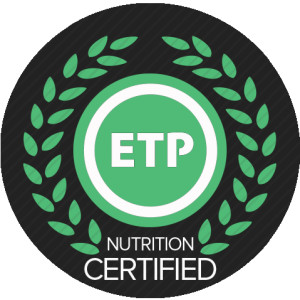So you’ve read a few articles or diets that espouse the healing benefits of juicing; weight loss, detoxification, massive intake of high quality nutrients, an end to disease, inflammation, et al. and you want to see what it’s all about. By the way, if you’re not sure yet, watch Fat, Sick and Nearly Dead. It’s an eye opening documentary for those that still aren’t convinced.
The good
While you are getting a concentrated amount of nutrients that has no fiber to slow it down, and the cell walls have already been broken down for your body to easily assimilate these nutrients (I ‘m a fan of smoothies as well, because of this same breakdown of the plant food cell wall. You can read more here). We have yet to understand the synergistic benefits of the combinations of different vitamins and minerals in each and every fruit, vegetable and herb out there. It is so much better to get your nutrition from food than it is from a synthetic vitamin or supplement. Juicing as well as blending, are great ways to add easy to absorb vitamins, minerals, phytonutrients, probiotics and enzymes into your diet.
The bad
On the down side (because nothing is perfect, right?), you must be aware of your portion sizes, as many juices have large amounts of sugar in them. Decreasing the amount of fruits and increasing green vegetables/herbs in your juices, will significantly lower the sugar content. Some people need time to transition to this stage, so if you are making juices with a lot of fruit (carrots and beets are higher in sugar too), just keep the portions in check. Too many calories, even if they come from good sources, will still become fat, if it’s not used. I also see this happen with smoothies. People start adding one thing after another and then don’t realize they’re taking in 300 more calories than they originally thought. Be aware of how much, and what, you are drinking.
Jumping in
Now that you’re interested in giving it a whirl, how do you go about choosing a juicer? First of all, they range in price from $50 to over $500. So you need to have some understanding of where you want to start off. I chose 4 of the best juicers that that fit a range of abilities. There are many others on the market of course, but I felt these were some of the best representations and options for what’s out there.
Dash |
Breville Juice Fountain |
Breville Duo Blade |
Omega VRT 350 |
|
|---|---|---|---|---|
| Cost | $50 | $150 | $350-$450 | $350-$400 |
| Warranty | 1 Year | 1 Year | 1 Year | 10 Years |
| Juices Wheatgrass | No | No | No | Yes |
| Purees | No | No | Yes | No |
| Makes Nut Milks | No | No | No | Yes |
| Easy to Clean | Yes | Yes | Yes | Yes |
The 3 most important factors in choosing your juicer
Cost
The first is the cost. How much do you want to do this and what are your financial capabilities? It’s useless to spend $300 on something and have it sit in your pantry. It’s also not so fun to spend $50 and have the machine burn out in 2 months from regular use. So you need to evaluate your goals and capabilities here.
Ease of use
Second, how easy is it to use? The ones I’ve mentioned are very easy. I do own a Greenstar (twin gear, masticating) juicer, and paid $350 for it, over 10 years ago. It’s been used less than 20 times. The number of parts to clean, and the small hole in the hopper to put food through (which meant I had to chop things twice as much as with other juicers) has made it too much of a pain to use. It still sits in my pantry today. I’m not exactly sure why, but I haven’t been able to part with it.
Drink it now, or drink it later
The third is whether or not you want to go with centrifugal force, or masticating (slow juicing). As it’s name implies, slow juicing is slower. Crushing fruits and vegetables, as opposed to chopping them with a blade, just takes longer. However, if your goal is to make larger batches, and are concerned about the preservation of nutrients, the slow juicer is the way to go. I will also say that the slow juicers ( the Breville crush and Omega vert350) do leave some pulp in the juice. This is not the case with the other masticating juicers that use twin gears or the centrifugal force ones. I’m 50/50 on the pulp, so when I don’t want any, I put a fine mesh sieve over the juice receptacle, to catch the pulp.
The Review
Entry level
For an absolute entry level juicer, the $50 DASH juicer, that can be found at Lowes, is a low commitment option. While it’s not the best (motor and materials do not seem well made, and yield od juice is lower than other models discussed), it will allow you to test out juicing with the least amount of investment. You’ll get to play around with juicing, have an easy to clean juicer, and you can decide if it’s for you.
So why spend more? The two easiest answers would be for yield (how much juice is actually attained from your fruits and vegetables), and obviously, quality of the machine. A more expensive juicer will usually come with a warranty, and the construction is made for regular use. After using several juicers, I knew that the DASH was going to burn out quickly with my 2-3Xs a week juice making and nut milk making. If you’re really into it, you want something that’s going to last and put up with plenty of use.
Best bang for the buck
The next simplest juicer out there would be the Breville juice fountain. This was the first juicer I ever owned (back when it was Breville’s only juicer), and I loved it. It’s easy to clean, has just 3 large parts, juices pretty well, and lasted me 7-8 years before I killed the motor. It costs about $150 and I can honestly say, I think it’s well worth it. It tends to be the juicer I recommend when I know someone really wants to juice, has the interest and commitment to actually use it, but they aren’t so sure about the process (or have the means) to start looking in the $300 and up range. It’s a great machine, at a great cost.
Getting commited
The next level up on the chain would be the Breville juice fountain duo disc (about $370). This is definitely a sweet machine. It has all of the great quality that Breville juicers offer, but offers 2 different discs, to yield the optimum level of juice from your fruits and vegetables. As you may know, Bananas and avocados are not juiceable, so don’t ever put them in your juicer. They don’t have the water content or consistency to make it through the juicer. Unless of course, you own this one! It will make more of a smoothie consistency when you them in.
As with the 2 previously mentioned juicers, this is a centrifugal force juicer. Meaning, it spins at high speed (while chopping your produce with a flat blade) to separate the juice from the pulp. There is some heat involved which can denature the juice. While this is minor, it’s best to make and drink your juice the same day. Nutritional content of juices (as with all fruits and vegetables) decreases as they sit. With the small amount of heat, this happens faster than if you used the next juicer I’m about to discuss.
The naturalist
Lastly, you have a masticating juicer, or slow juicer. This type of juicer crushes food and either runs the produce through a twin gear mechanism (like the Greenstar) or through an auger (like the Omega Vert or Breville Crush). This slow juicing method gives a maximum yield from your fruits and vegetables, and does not introduce any heat in the process. Using a slow juicer allows you to make a larger batch of juice, and save it for up to 3 days. My personal favorite is the Omega VERT350, but after looking at the specs and seeing them tested, the Breville crush is very similar. I chose the Omega because of the great warranty. I recently had a problem with mine and the customer service was phenomenal. And because of the warranty, they immediately sent me replacement parts with zero hassle.
Another great option that I haven’t mentioned, is to borrow one! Try it out and see what you think. You’ll only need 3-5 times trying it to get a feel for what may be, the best juicer for you. In a world where we are bombarded with toxins, in our environment, in our food, our cleaners, etc., this is a great way to help your body combat the damage being done. No pill* out there can do what a glass of fresh, vegetable rich, juice can do for you.
Seize Every Moment!
*this is not suggesting you go off any medically necessary medication you are currently taking.






